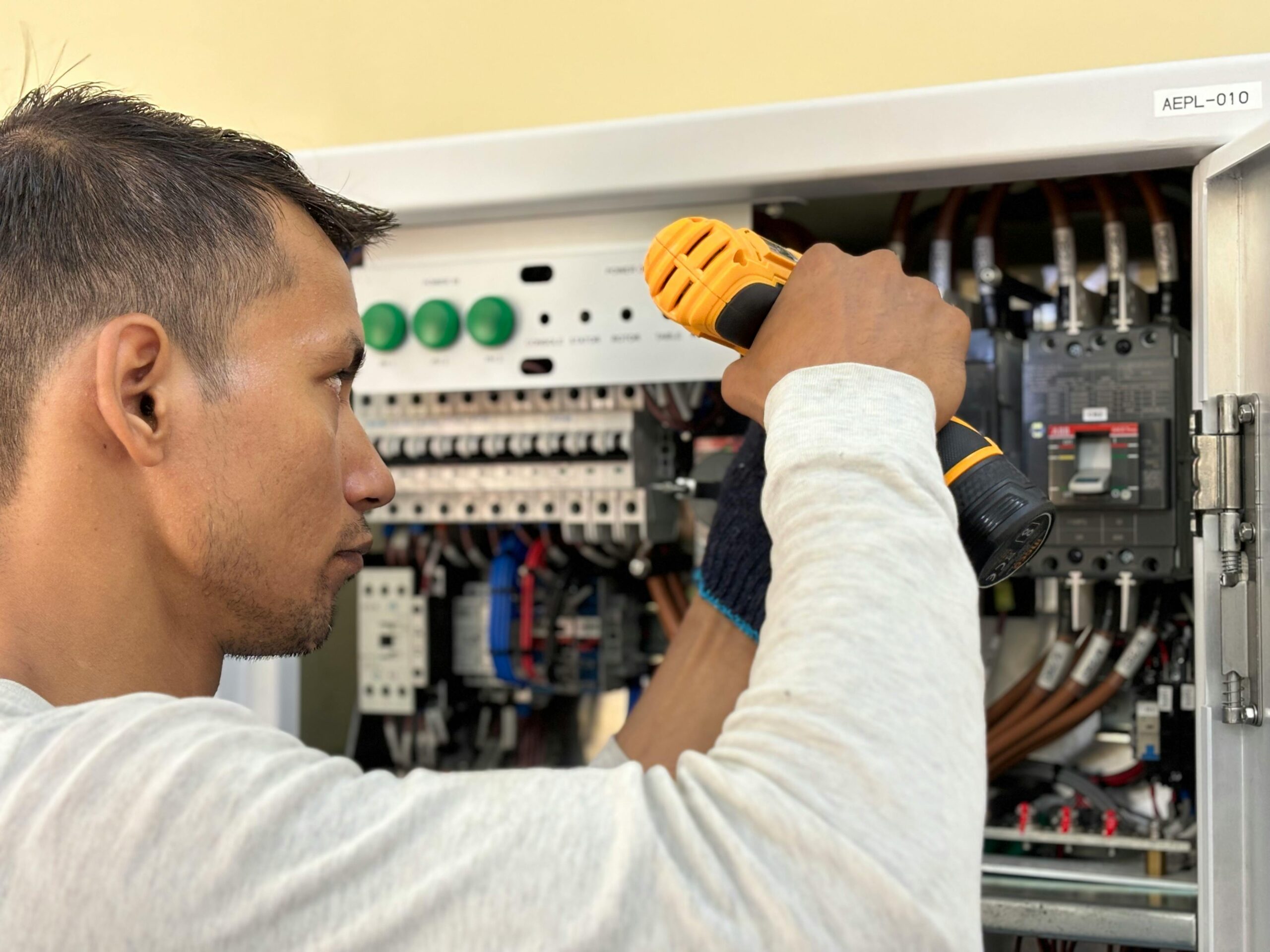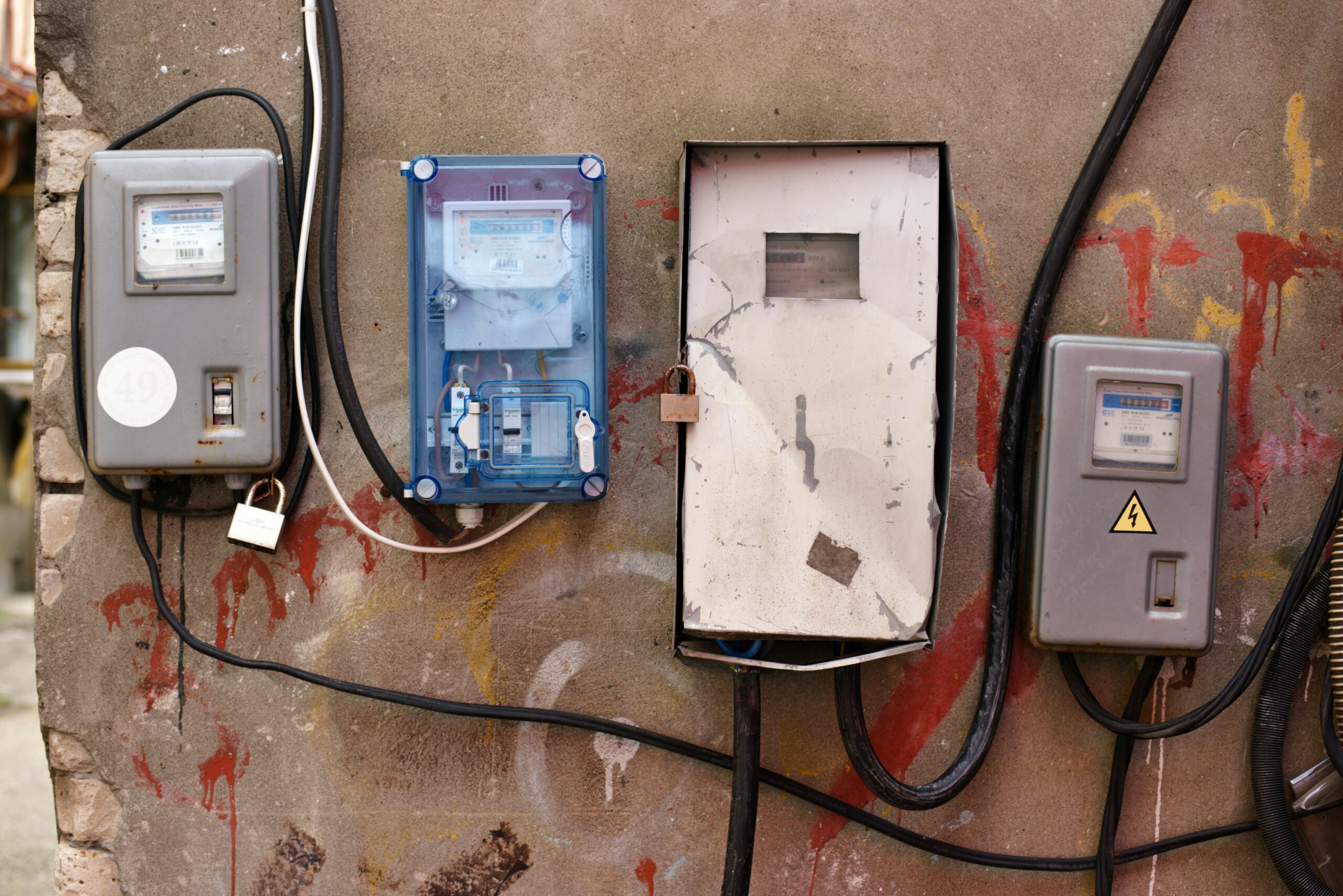Circuit breakers play a crucial role in protecting both people and property by preventing electrical overloads and short circuits.
They serve as the first line of defense against electrical fires, which can result from faulty wiring or malfunctioning appliances. By automatically cutting off the electrical supply when an unsafe condition is detected, circuit breakers help mitigate the risk of fire hazards and reduce damage to electrical systems.
Furthermore, these devices ensure the safety of household members by minimizing the chances of electric shock or an electrical fire. Regularly testing and maintaining circuit breakers is essential to ensure they function properly, which is vital for sustaining a safe living environment.
Understanding Circuit Breakers
Circuit breakers are essential components of electrical systems that act as safety devices, automatically interrupting the flow of electricity when there is an overload or fault condition. This function helps to prevent overheating, electrical fires, and damage to appliances.
Definition and Function of Circuit Breakers
A circuit breaker is an automatically operated electrical switch designed to protect an electrical circuit from damage caused by excess current or a short circuit. Its primary function is to detect faults and disconnect the electrical flow, ensuring the safety of both the circuit and the devices connected to it.
Types of Circuit Breakers
There are several types of circuit breakers, primarily categorized based on their functionality and application:
- Standard Circuit Breakers: These are the most common type found in residential and commercial settings. They protect against overloads and short circuits, functioning by tripping when the current exceeds a predefined limit.
- Ground Fault Circuit Interrupters (GFCIs): GFCIs are designed to protect against ground faults by quickly shutting off power when they detect an imbalance between incoming and outgoing currents. They are especially important in areas prone to moisture, such as bathrooms and kitchens.
- Arc Fault Circuit Interrupters (AFCIs): AFCIs are advanced circuit breakers that detect arc faults, which can occur due to damaged wires or loose connections. By interrupting the circuit in the presence of an arc, they significantly reduce the risk of electrical fires caused by arcing.
Understanding these types of circuit breakers is crucial for ensuring safe electrical practices and protecting against potential hazards in both residential and commercial environments.
Early Warning Signs of a Bad Circuit Breaker
Frequent Tripping
One of the most noticeable indicators that a circuit breaker is bad is frequent tripping. When a circuit breaker trips repeatedly, it can signify that the electrical system is overloaded, which can lead to potential hazards.
Common causes include too many devices being connected to a single circuit, malfunctioning appliances, or a short circuit. It’s essential to identify the root cause to prevent further issues.
Ignoring frequent tripping can be dangerous, as it may lead to overheating and increase the risk of electrical fires. Consistent tripping is a sign that something is wrong and shouldn’t be overlooked.
Breaker Won’t Stay Reset
If the breaker fails to stay reset, it suggests a serious underlying issue. This may indicate a significant electrical fault, potentially exposing your home to safety risks.
Underlying problems could include damaged wiring, faulty appliances, or an overloaded circuit. Addressing these issues promptly can prevent severe electrical malfunctions.
Failing to address a defective circuit breaker can compromise your home’s safety and lead to serious accidents. Regular monitoring and maintenance of the electrical system are crucial.
Visible Damage or Burn Marks
Examine the faulty breaker for any visible signs of damage, including burn marks or melting. These signs are clear indicators of a malfunctioning breaker that requires immediate attention.
Regular inspection of your circuit breakers can help identify potential issues early. Look for signs of wear, listen for unusual noises, and ensure that all connections are secure.
If you’re experiencing frequent tripping, the breaker won’t reset, or you notice visible damage, it’s essential to consult a qualified electrician. Professional evaluation and repairs can mitigate potential risks and ensure your electrical system operates safely.
Performance-Related Symptoms
When a circuit breaker is faulty, several performance-related symptoms may arise, indicating reduced electrical efficiency. Homeowners may notice that electrical appliances and devices are not operating at optimal performance levels, often resulting in inconsistent power delivery.
Reduced Electrical Efficiency
A circuit breaker that is failing can exhibit signs of reduced electrical efficiency, often marked by flickering lights, dimming when multiple devices are in use or frequent tripping. This inefficiency can lead to increased energy consumption, thereby elevating utility bills.
Faulty circuit breakers can severely impact household appliances. Devices may not operate correctly, and sensitive electronics may risk damage due to fluctuations in power supply. For example, refrigerators might struggle to maintain proper temperatures, leading to food spoilage.
If left unaddressed, the long-term effects of a malfunctioning circuit breaker can include persistent damage to electrical systems, increased risk of electrical fires, and costly repairs or replacements for appliances that have been subjected to inconsistent power levels.
Hot to the Touch
A telltale sign of a malfunctioning circuit breaker is that it becomes hot to the touch. This heat indicates overloading or internal faults, which could pose serious safety risks. Homeowners should exercise caution and avoid touching a hot breaker until it cools down.
Circuit breakers should remain at a safe operating temperature, typically below 80 degrees Fahrenheit (27 degrees Celsius). A breaker that exceeds this temperature range is a clear indication of potential failure and should be examined by a professional electrician.
If you suspect that your circuit breaker is faulty, it’s essential to take immediate action. First, turn off all appliances connected to the circuit to prevent further damage. Next, monitor the breaker for unusual signs and consult a licensed electrician to diagnose and resolve the issue safely.
Electrical System Anomalies
Electrical system anomalies can present themselves in various ways, often signaling underlying issues that require immediate attention.
One of the most common indicators is flickering lights, which may be caused by loose wiring, overloaded circuits, or faulty bulbs. While they may seem minor, flickering lights can pose potential risks, including equipment damage and increased fire hazards.
Burning Smell
A burning smell is a serious warning sign that should not be ignored. It may indicate overheating wiring or electrical components.
Identifying the source of the smell is crucial; if it is coming from an outlet, appliance, or the circuit breaker itself, it may require urgent response steps, such as turning off the power and consulting a licensed electrician.
Unusual Noises
Another concerning sign is the presence of unusual noises, such as buzzing or humming sounds. These noises can indicate problems like loose connections or faulty circuits. It’s important to address these sounds promptly, as they can escalate into more serious issues if left unchecked.
By understanding these electrical system anomalies, homeowners can better protect their property and ensure a safe living environment.
Common Causes of Circuit Breaker Failure
Circuit breakers can fail for several reasons, with one significant factor being wear and tear over time. Like any mechanical device, circuit breakers experience stress from repeated use and exposure to environmental conditions, leading to diminished performance.
Signs of aging may include physical cracks, unusual noises when toggled, or failure to reset properly. To mitigate these risks, preventive maintenance is essential. Regular inspections and timely replacement help prolong the lifespan of circuit breakers.
Another common cause of failure is electrical overloads, which occur when the circuit is asked to carry more current than it is designed to handle. Understanding the load capacity of each circuit and managing household appliances accordingly can prevent these dangerous situations.
It’s also crucial to be aware of short circuits—an unintended path in the electrical system that can cause excessive current flow. To handle this effectively, identifying short circuits quickly is vital, which often manifests as sudden breaker trips or burning smells.
In case of a suspected short circuit, immediate actions should include turning off power to the affected circuit and seeking professional assistance to resolve the issue safely.
Preventive Measures and Best Practices
Taking preventive measures and adhering to best practices can significantly extend the lifespan of circuit breakers and improve overall safety.
Regular Maintenance Checks
Conducting regular maintenance checks is essential for identifying potential issues before they escalate. This includes visually inspecting circuit breakers for any signs of wear, such as burn marks or unusual noises during operation.
Establishing a maintenance schedule can help ensure that checks are performed consistently. Consider setting quarterly or biannual reminders to thoroughly assess the electrical system and its components.
Basic tools such as a multimeter, voltage tester, and insulated screwdrivers are essential for performing checks on circuit breakers safely. These tools provide accurate readings and help detect issues effectively.
Upgrading Old Circuit Breakers
If breakers are outdated or frequently trip, consider upgrading to more modern models. New breakers often come with enhanced features that improve efficiency and safety.
Modern circuit breakers can provide added protections, such as GFCI (Ground Fault Circuit Interrupter) and AFCI (Arc Fault Circuit Interrupter) capabilities, which safeguard against electrical faults and reduce fire risks.
While the initial investment in upgrading circuit breakers may seem significant, the long-term savings from reduced maintenance costs and increased safety can outweigh the expenses.
Proper Usage of Electrical Devices
Educating users on the proper usage of electrical devices is also crucial. This includes understanding the power ratings of appliances and ensuring they do not exceed the circuit breaker’s capacity.
Avoiding overloads is vital to maintaining circuit integrity. Distributing electrical loads evenly and using power strips wisely can help mitigate this risk.
Safe Appliance Practices
Lastly, adopting safe appliance practices, such as unplugging unused devices and avoiding daisy-chaining power strips, can further protect against circuit overloads and potential failures. Implementing these strategies will enhance safety and prolong the life of your electrical systems.
Repair and Replacement Options
When dealing with a faulty circuit breaker, it’s essential to evaluate the available repair and replacement options carefully. For those confident in their skills, DIY Repairs can be an appealing solution.
Simple fixes and adjustments, such as tightening connections or resetting the breaker, can often resolve minor issues. However, understanding when DIY is enough is vital; if the problem persists or if there are signs of significant electrical malfunction, it may be time to step back and consider professional help.
Hiring a qualified electrician is the safest route for more complex problems. Choosing a Qualified Electrician involves researching credentials, checking references, and confirming that they are licensed and insured.
Factors such as cost and time estimates should also be discussed upfront to avoid unexpected expenses. A professional can accurately diagnose issues and replace faulty components, ensuring your electrical system operates safely and efficiently.
Summary
When it comes to circuit breakers, recognizing the key signs of malfunction is crucial for maintaining electrical safety.
Among the most common indicators of a faulty circuit breaker are frequent tripping, unusual noises, a burning smell, and visible signs of wear or damage. Timely detection of these signs not only prevents possible electrical fires or damage to appliances but also ensures the ongoing functionality of your electrical system.
Addressing the signs of a faulty circuit breaker promptly is essential to prevent dangerous situations. Ignoring these symptoms in the electrical panel can lead to electrical fires, appliance damage, or even personal injury. Regular maintenance and inspections can help catch issues early, ensuring safety and functionality.
Always prioritize safety when dealing with electrical systems. If you suspect a fault in your circuit breaker, it’s advisable to consult a licensed electrician to accurately diagnose and rectify the problem. Regularly check for the above signs and perform routine maintenance to uphold electrical safety in your home.
We help companies refine their messaging, hone in their sales process, and grow their pipeline – all with a new website.



